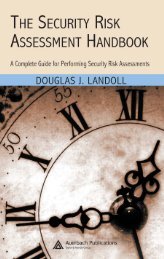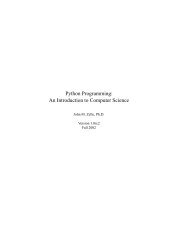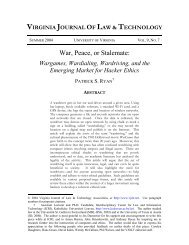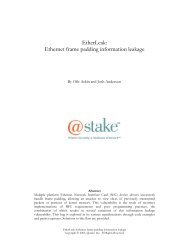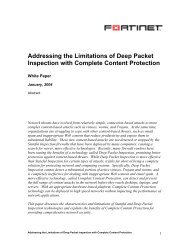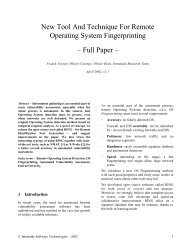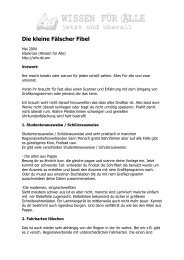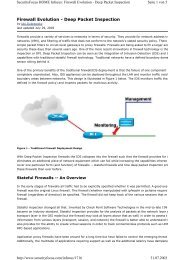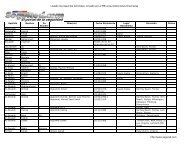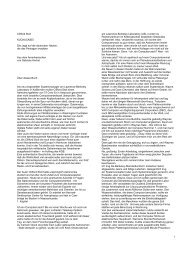ACTIVE DIRECTORY SECURITY CHECKLIST ... - Leet Upload
ACTIVE DIRECTORY SECURITY CHECKLIST ... - Leet Upload
ACTIVE DIRECTORY SECURITY CHECKLIST ... - Leet Upload
You also want an ePaper? Increase the reach of your titles
YUMPU automatically turns print PDFs into web optimized ePapers that Google loves.
Active Directory Checklist, V1R1.2 Field Security Operations<br />
22 September 2006 Defense Information Systems Agency<br />
APPENDIX D: <strong>DIRECTORY</strong> INFORMATION GATHERING<br />
This appendix of the Checklist describes tools and methods that could be used to gather directory<br />
information. This is certainly not an exhaustive list. It is intended to point out some of the<br />
simpler and less invasive tools that are available. Although multiple tools are described, the<br />
emphasis is on the simplest command line tools and methods.<br />
D.1 Active Directory<br />
The tools and processes in this section are used to gather information about Active Directory<br />
implementations. SAs may consider compiling some of these tools into batch scripts that could<br />
be used to automate information gathering for their specific environment.<br />
Note: Some of the procedures described here require that the user performing the actions is a<br />
member of the Domain Admins security group.<br />
Note: Some of the tools described here require specific Windows releases or the installation of<br />
additional programs:<br />
- Methods that are identified with “Windows Server 2003” use programs that are present on<br />
domain controllers that are running that release or later.<br />
- Methods that are identified with “Windows Support Tools” use programs that are installed<br />
with the Windows Support Tools optional component. Although present on the OS server<br />
installation CD, these programs are not installed by default.<br />
- Methods that are identified with “Script” use the Windows Script Host (WSH) to execute<br />
scripts written in the Microsoft Visual Basic Scripting Edition (VBScript) language. The<br />
scripts invoke the Active Directory Service Interfaces (ADSI) components to get information<br />
from AD. These components are present on all Windows 2000 and later releases, but it is<br />
possible that the execution of VBScript scripts is restricted or disabled on individual<br />
machines.<br />
D.1.1 Identifying Domain Controllers<br />
The following are methods to get a list of all the domain controllers in a domain.<br />
Method 1: Microsoft Management Console<br />
a. Start the Active Directory Users and Computers console (“Start”, “Run…”, “dsa.msc”).<br />
b. Select and expand the left pane item that matches the name of the domain being reviewed.<br />
c. Select the Domain Controllers OU.<br />
d. Each domain controller is represented as an object in this OU.<br />
Notes: This method assumes that domain controller computers are members of the Domain<br />
Controllers OU. This is the default AD configuration and Microsoft recommends strongly<br />
against changing it.<br />
UNCLASSIFIED<br />
D-1



